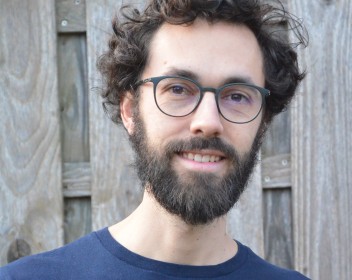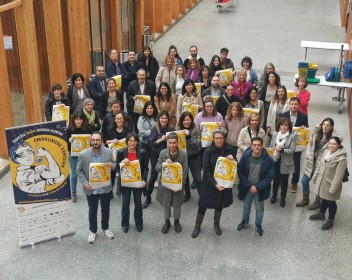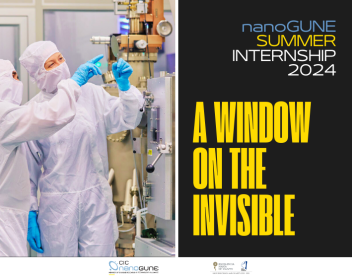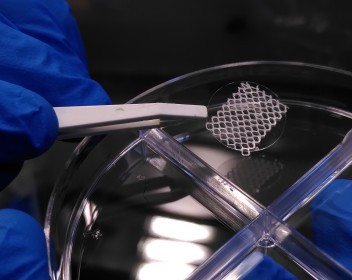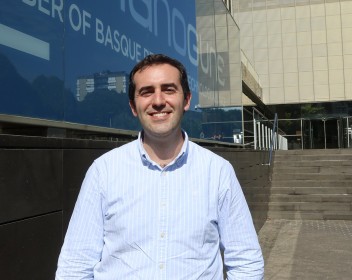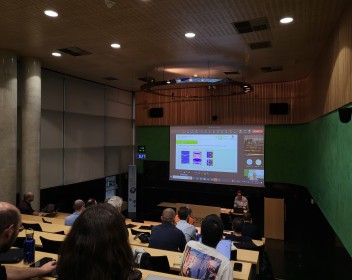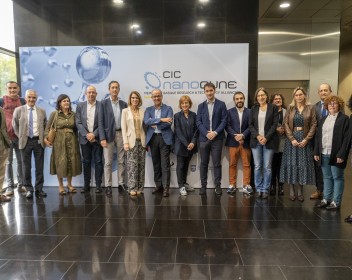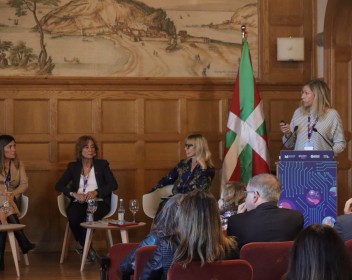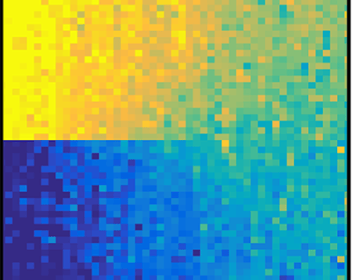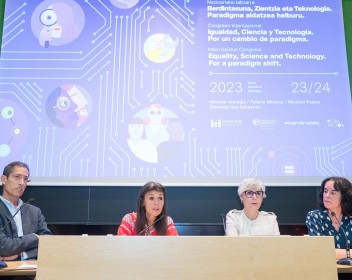Newsroom
News
Niklas Friedrich gets GEFES 2023 Award for best experimental thesis
The Condensed Matter Physics Division (GEFES) of the Spanish Royal Society of Physics (RSEF) has awarded the researcher Niklas Friedrich of nanoGUNE’s Nanoimaging Group the prize for best experimental PhD thesis in condensed matter physics, for his thesis entitled Electronic transport through suspended graphene nanoribbons using a scanning tunneling microscope.
Emakumeak Zientzian, people in search of a full life
Thirty-two Basque organizations are joining forces around the Emakumeak Zientzian project, thus declaring their commitment to the aims of the initiative: to bring visibility to the activity of women in science, to break with the typically male roles attributed to scientific and technical activities, and to encourage girls and adolescents to opt for scientific careers. With these aims in mind, the organizations are coming together to run a joint program of activities to mark International Day of Women and Girls in Science, celebrated every year on February 11.
Quantum nanoscience, nanomaterials and nanomedicine the focus of CIC nanoGUNE´s summer internship programme
Printing complex biological structures for medical applications
The research centers CIC nanoGUNE and POLYMAT and the 3D printing company Indart3D are collaborating to produce a tool that creates human tissue with the precision and complexity required for tissue and organ regeneration and make it available to medical and research personnel. The project, known as NANOPRINT BIO, is the outcome of a unique collaboration between research centers and companies, and is supported by the Basque Government's R&D grant program Hazitek 2023.
Stable, efficient, and sustainable storage of digital data in DNA
CIC nanoGUNE, a nanoscience research center in the Basque Country, is exploring and developing new materials to store DNA containing digital information. This promising line of research, led by nanoGUNE's Self Assembly team, is part of the TextaDNA project, a European Union EIC PathFinder project coordinated by nanoGUNE. Also participating in this project is the German company Eurofins Genomics, one of the major European organizations in the field of DNA synthesis and sequencing. Specifically, the project is set to receive a grant of 2.5 million euros, which will be used to acquire equipment and set up a working team for this line of research.
Nanodevices group hosts Interfast and Sinfonia project meetings
New scientific equipment purchased within the Basque Government's Azpitek program
The International Congress 'Equality, Science and Technology. For a Paradigm shift' has begun
Critical Scaling of Dynamic Phase Transitions in magnetic films
In a recent article published in Physical Review Letters (Phys. Rev. Lett. 131, 116701 (2023)) and selected as an Editor’s suggestion, Mikel Quintana and Andreas Berger from the Nanomagnetism group at nanoGUNE succeeded in experimentally detecting and quantifying critical scaling near the dynamic phase transition (DPT) for the first time.
Presentation of the International Congress "Equality, science and technology. For a paradigm shift."
The Basque Government Minister for Equality, Justice and Social Policies Nerea Melgosa, and the Director of Emakunde (the Basque Institute for Women) Miren Elgarresta, have presented the International Congress “"Equality, science and technology. For a paradigm shift” to be held on October 23 and 24 at the Miramar Palace in Donostia-San Sebastian; they were accompanied at the CIC nanoGUNE center by the Director of nanoGUNE Txema Pitarke and the Director of Digital Identity of the University of Deusto Lorena Fernández. The Lehendakari (President of the Basque Government) Iñigo Urkullu will be inaugurating a congress set to bring together international experts with a view to addressing existing inequalities and gender gaps and the transformations needed to systemically incorporate equality between women and men in the field of science and technology.
Agenda
| Mon | Tue | Wed | Thu | Fri | Sat | Sun |
|---|---|---|---|---|---|---|
|
29
|
30
|
31
|
1
|
2
|
3
|
4
|
|
|
|
|
|
|
|
|
|
5
|
6
|
7
|
10
|
11
|
||
|
|
|
|
|
|
||
|
12
|
13
|
14
|
15
|
16
|
17
|
18
|
|
|
|
|
|
|
|
|
|
19
|
20
|
21
|
23
|
24
|
25
|
|
|
|
|
|
|
|
|
|
|
26
|
27
|
29
|
30
|
31
|
1
|
|
|
|
|
|
|
|
|
Events
- 04/02/2026 to 06/02/2026
nanoGUNE Winter School 2026
nanoVISUALS
Find events' photos, experimental images, videos, audios, and nanoGUNE's corporate images.

